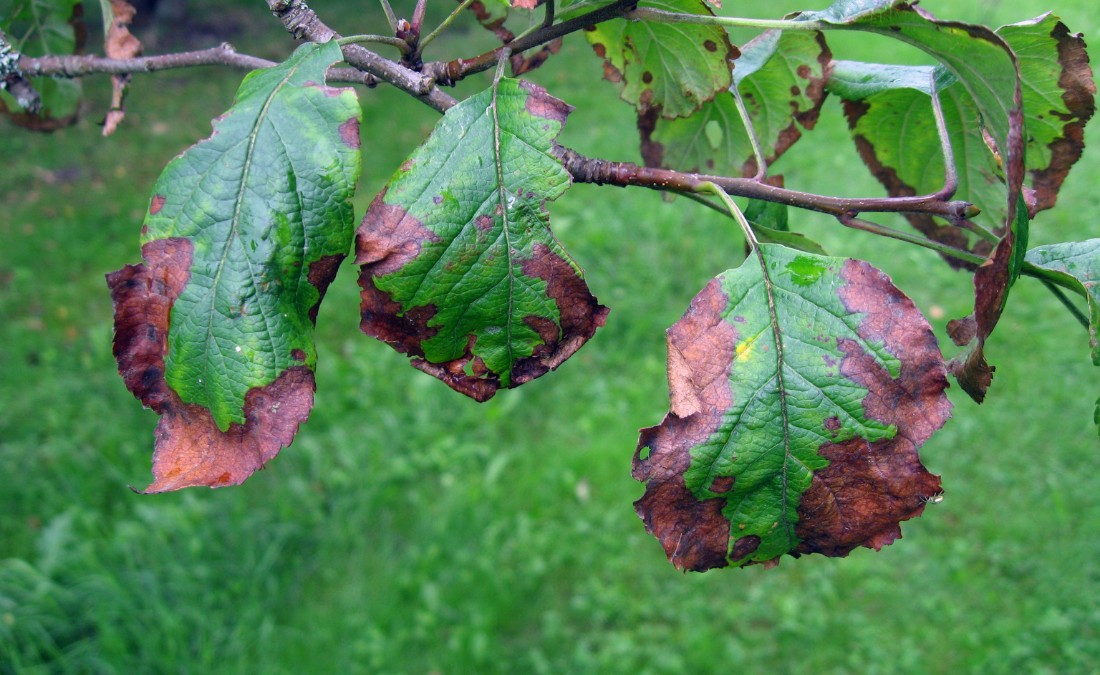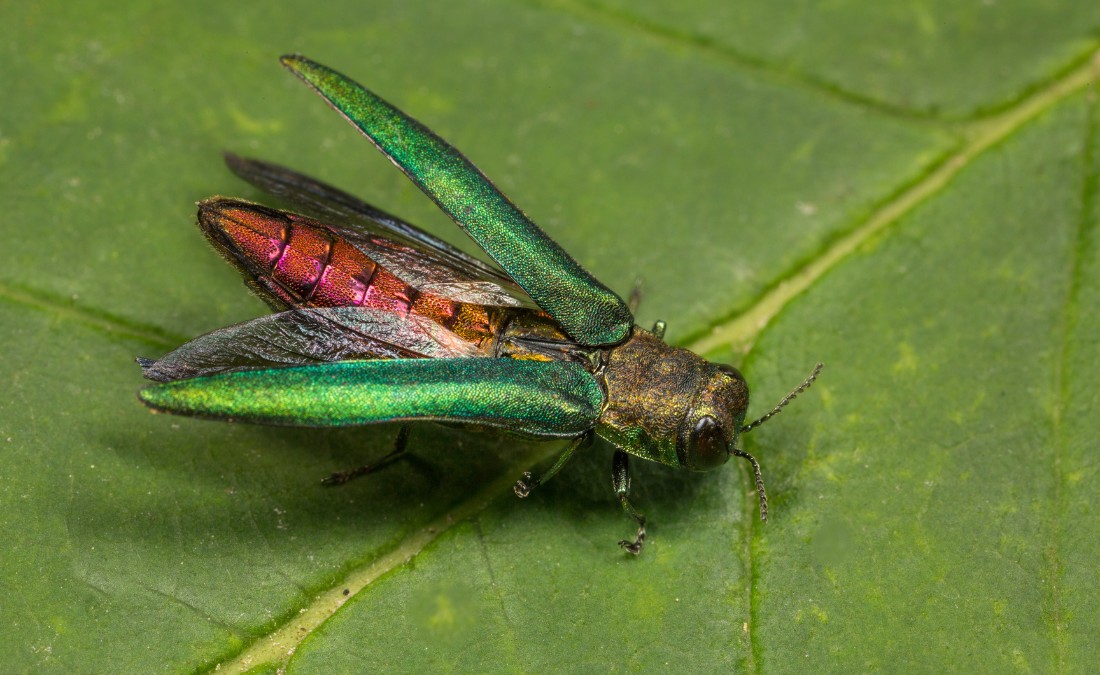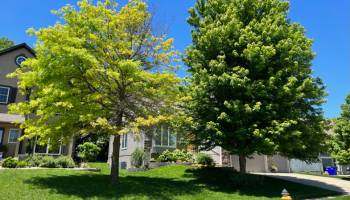Navigating Tree Pests and Diseases in Eastern Kansas City
As our climate continues to shift and weather patterns become more unpredictable, new pests and diseases are emerging in our area. These changes can create ideal conditions for invasive species to thrive and existing pests to spread more rapidly.
At Arbor Masters, we understand the importance of staying ahead of these evolving threats. Our Certified Arborists serve KCMO – including Raytown, Lee's Summit, Blue Springs, Grandview, Independence, and nearby communities. We are dedicated to staying informed about the latest industry trends, research, and emerging pests so we can deliver the most effective, science-based tree care solutions available.
Protecting Your Trees from Common Pests and Diseases
Understanding the threats your trees face is the first step in keeping them healthy and thriving. In Eastern Kansas City, Missouri, several pests and diseases can cause significant damage if left untreated.
Emerald Ash Borer
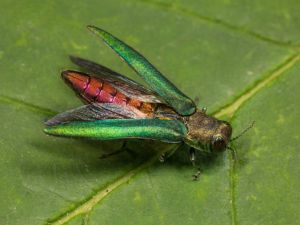
Bagworms
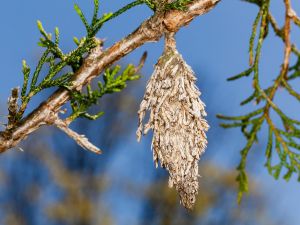
Japanese Beetles
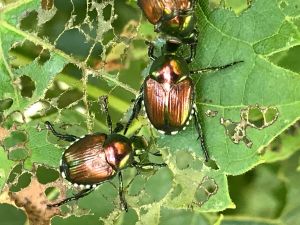
Armillaria Root Rot
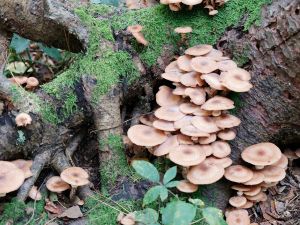
Oak Wilt
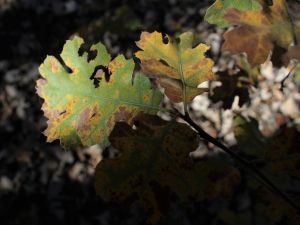
Hypoxylon Canker
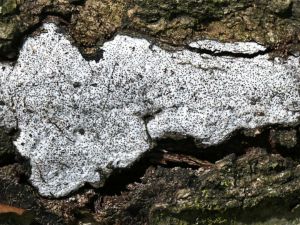
Signs Your Tree Needs a Certified Arborist
If you notice any of these signs, it’s time to call in a tree care expert to assess the health of your tree and recommend appropriate treatment:
Dying or discolored leaves: Leaves that are turning brown, yellow, or wilting prematurely can be a sign of underlying issues.
Excessive leaf drop: Trees that are losing leaves excessively, especially outside of the normal fall season, may be experiencing stress or disease.
Insect infestations: Visible signs of insects, such as larvae, pupae, or adult insects, can indicate a pest problem that requires attention.
Bark damage or cankers: Cankers, which are sunken, discolored areas on the bark, can be a symptom of disease or fungal infections.
Dead or dying branches: Branches that are completely dead or have many dead twigs and leaves may need to be removed to prevent further damage.
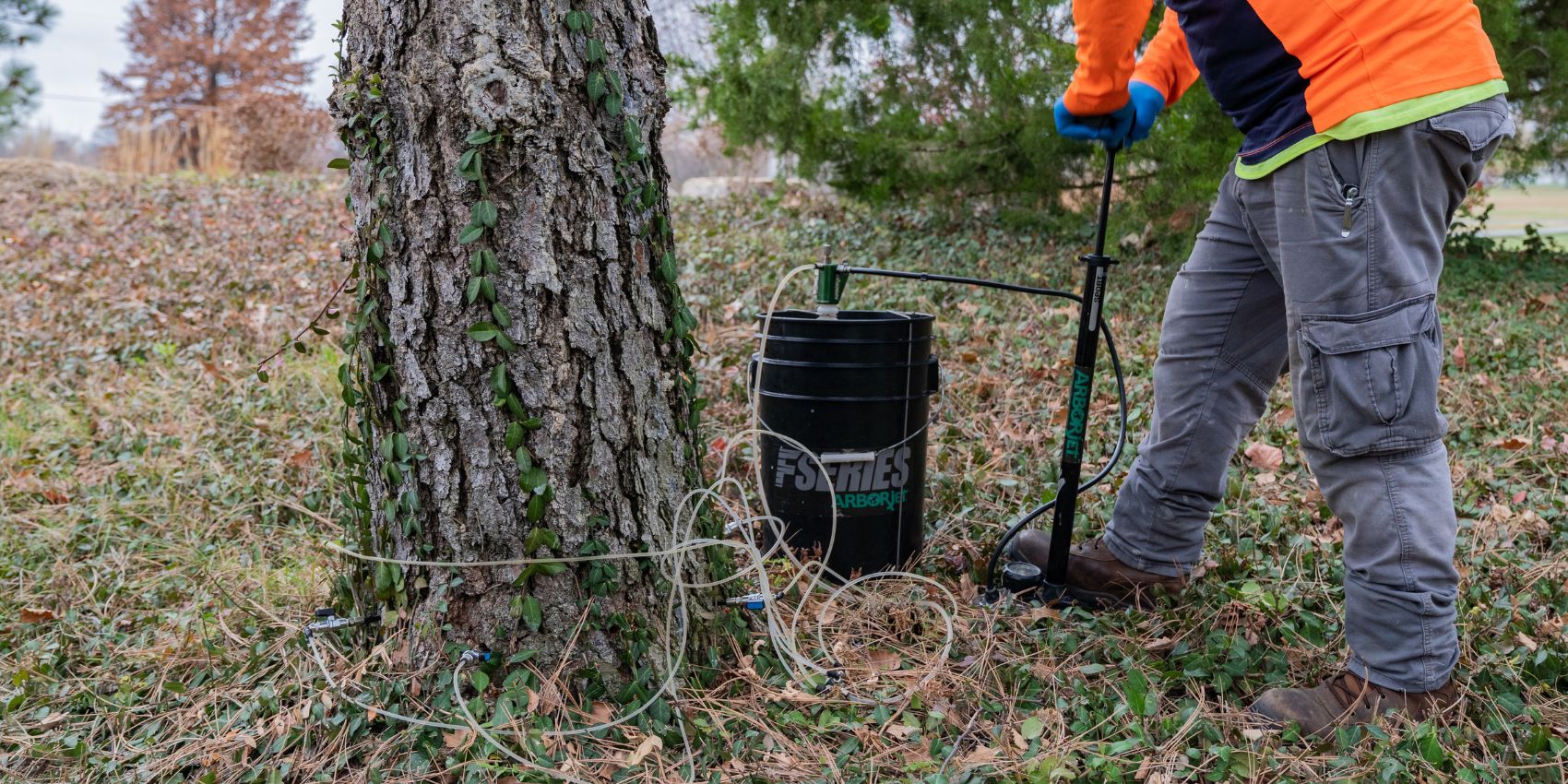
What to Expect When We Treat Your Trees
Our approach to treating tree pests and diseases is rooted in a commitment to both effectiveness and environmental responsibility. We believe in using targeted treatments that address the specific problem without harming beneficial insects or disrupting the ecosystem. Here’s what you can expect from us:
Thorough Assessment
Our experienced arborists will conduct a detailed examination of your trees, carefully inspecting leaves, branches, trunk, and root system for any signs of pests or diseases.
Accurate Diagnosis
Based on our findings, we’ll provide a precise diagnosis of the underlying issue and a detailed quote on the recommended treatment plan.
Targeted Treatment
At Arbor Masters, we believe in using environmentally responsible methods that target specific pests and diseases without harming beneficial insects.
Follow-Up Care
To ensure long-term health and vitality, we provide ongoing maintenance. This may include inspections, additional treatments as needed, and recommendations for proper tree care practices.
Can My Tree Be Saved?
While some pests and diseases can be managed effectively, others may require more drastic measures. If your tree is severely damaged or infected, we may recommend removal to prevent further spread and protect nearby trees. However, we’ll always do our best to save your trees whenever possible.
Why Choose Arbor Masters for Tree Insect and Disease Services?
When it comes to protecting your valuable trees from pests and diseases, choosing the right arborist is important. Arbor Masters stands out from the competition for several key reasons:
Unmatched Expertise
Our team of Certified Arborists possesses a deep understanding of tree biology, pest behavior, and disease identification. With years of experience and continuous training, we are equipped to handle even the most complex tree health challenges.
Personalized Care
We believe that every tree is unique, and we tailor our approach to meet the specific needs of your individual trees. Our personalized care ensures that your trees receive the optimal treatment for their particular situation.
Cutting-Edge Techniques
We stay at the forefront of the industry by using the latest techniques and technologies in tree care. From advanced diagnostic tools to innovative treatment methods, we employ the most effective strategies to protect your trees.
Environmental Commitment
At Arbor Masters, we are committed to preserving the environment. We prioritize environmentally friendly practices and using targeted treatments that minimize harm to beneficial insects and the ecosystem.
Exceptional Customer Service
Our goal is to provide exceptional customer service. We are dedicated to building strong relationships with our clients and ensuring their complete satisfaction with our services.
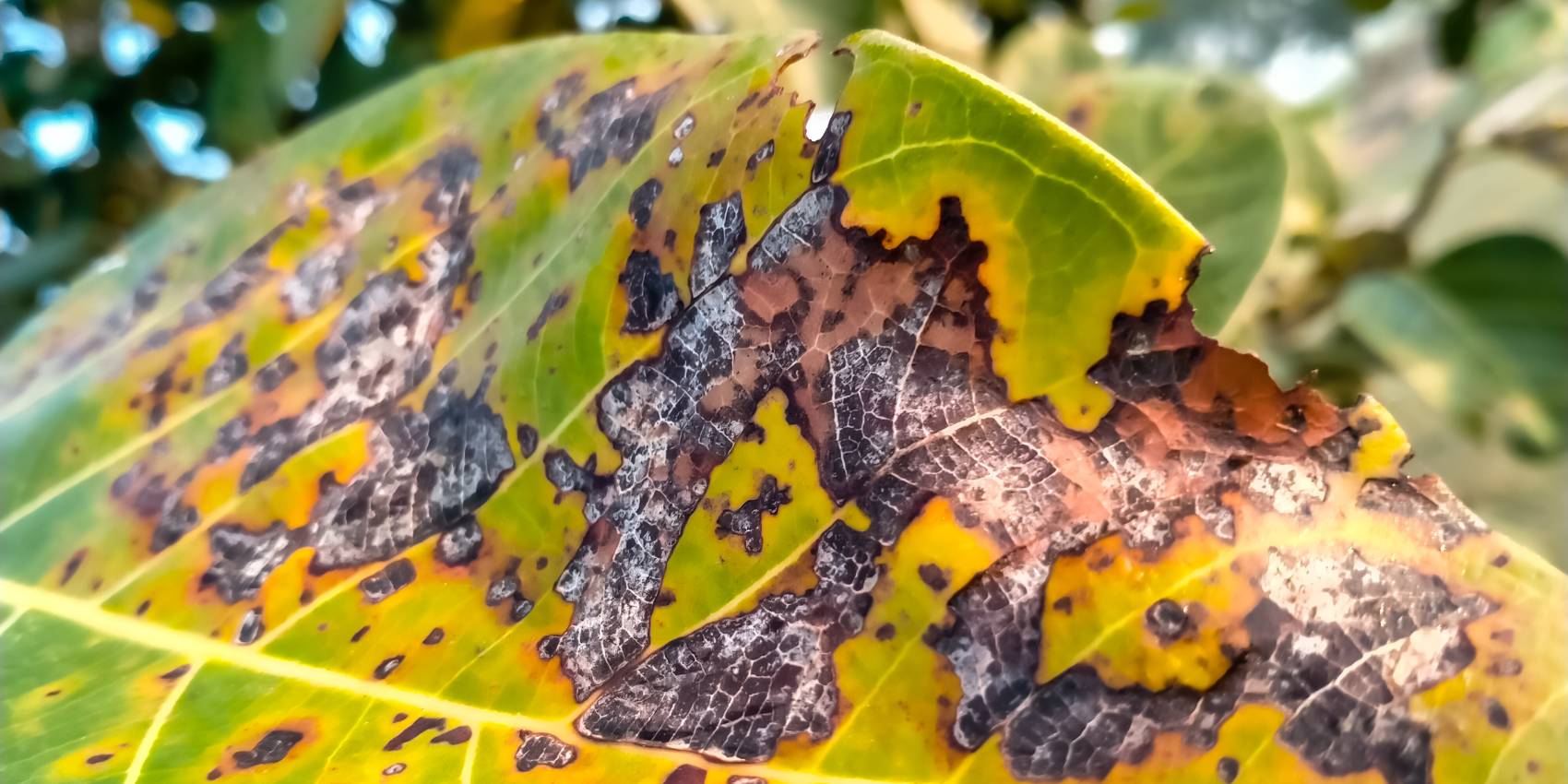
Tree Pest & Disease Managment Near You in the Eastern KC Metro Area
We proudly serve the following areas:
Greenwood
Kearney
Lone Jack
Smithville
Raytown
FAQs About Tree Diseases and Pests
While most hardware stores sell foliar sprays for trees or shrubs that claim to control certain pests in our area, these over-the-counter sprays can have negative impacts on beneficial insects and overall health of our ecosystem.
That’s why we always recommend consulting with a Certified Arborist for a more targeted and sustainable approach to pest control. Arbor Masters can accurately diagnose the specific pest or disease affecting your trees and recommend the most appropriate and effective treatment.
The ideal frequency for tree inspections depends on several factors, including tree species, age of the trees, location, and recent weather events. A tree that receives regular care and looks otherwise healthy might only require inspections every 3-5 years, while a tree that is in an area with known disease or pest outbreaks will likely need inspections yearly.
However, if your tree is showing signs of stress, damage, disease or pests, it’s important to get an inspection scheduled as soon as possible.
Yes, there are several preventive measures you can take to help protect your trees from pests and diseases:
- Proper tree care: Ensure your trees receive adequate water, nutrients, and professional pruning when necessary.
- Avoid root damage: Be cautious when digging or planting near trees to avoid damaging their roots.
- Monitor for signs of problems: Regularly inspect your trees for signs of pests or diseases, such as yellowing leaves, dying branches, or insect damage.
- Choose healthy trees: When planting new trees, select healthy specimens from reputable nurseries.
- Avoid over-fertilization: Excessive fertilization can stress trees and make them more susceptible to pests and diseases.
Treating diseases is often difficult and involves chemicals. Spraying without knowing what you are doing can harm the tree and kill beneficial bugs that help control pest activity.
Check Out Our Blog for More Helpful Resources
To see more expert information about common tree pests and diseases around Jackson County, MO, and other helpful topics, visit our blog today.
From Leaf Spots to Dead Branches: Diagnosing Tree Diseases in Wichita
6 Tips to Protect Your Tulsa Trees from Insects and Disease This Summer
How to Protect Your Wichita Trees from Emerald Ash Borer and Other Invasive Pests
Protecting Your Midwest Trees from Bagworm Infestations

